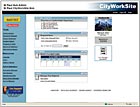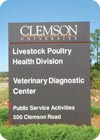
Trust, frequent face-to-face meetings and homeland security concerns drive the success of a neighborhood private-public security partnership in Washington, D.C. The project was featured at the recent NASCO Summit, hosted in part by Security Magazine. Panelists shown include: John Petrie of George Washington University, Wilson Crafton Jr. of the U.S. Department of Homeland Security, Jim Remik of Admiral Security Services and George Nunez of George Washington University.
There’s this thing about private security and public law enforcement working together. It’s called trust or sometimes the lack of it.
There was a time when there was a visible lack of trust between private security (corporate security operations and contract security officer services) and law enforcement. Ironically, it was also a time when a significant number of enterprise security directors came from the ranks of retired police officials.
What a difference talking, sharing, joint meetings and common goals – and the tragedy of September 11th – have made.
Crisis Buddies
You can thank a lot of people on the local level, of course. But three national organizations, and their commitment of a more effective public-private connection, stand out. The International Association of Chiefs of Police (IACP) is one. Politically savvy and locally focused, the membership – early on – saw value in exploiting the relationship. IACP is working with ASIS International, among other organizations. The Security Industry Association, the trade association for the makers of primarily electronic security equipment, pioneered studies and white papers in the use of gear, first used by private security, in public places. Thanks should go to SIA’s staff leader, Richard Chace, who was one of Security Magazine’s Top 25 Most Influential Security Executives last December.Then there is the work of the National Association of Security Companies (NASCO), which represents the top national security guarding and investigation firms.
At the annual NASCO Summit in Washington, D.C., just weeks ago, one important panel centered on neighborhood planning partnerships in that area. The key to its success, so far, has been the constant meetings of the parties involved. They include the U.S. Department of Homeland Security, security executives from George Washington University and private sector Admiral Security Services.
According to the panelists, emphasis is on improving communications and coordination among the organizations and agencies, seeking commonality among diverse emergency response plans as well as collaborating on incident planning education and training exercises.

In Minnesota, a public-private project that brings together private security, businesses and law enforcement aims at crime reduction and quality of life. Pictured from left, Terrance McManus, NorthWrite; Tim Kingsley, American Security; Saint Paul Mayor Chris Coleman; and a local television reporter, Angela Davis, WCCO TV, at the launch of Saint Paul’s new program.
Unique Neighbors
John Petrie, assistant vice president for public safety and emergency management at George Washington University told the NASCO audience that it is essential to first look at the community and its public law enforcement and private security members and get everyone involved. Beyond the university community, the neighborhood also includes the White House, the International Monetary Fund and the World Bank, which makes the emergency management planning partnership even more critical, added Jim Remik of Admiral Security Services.Also on the panel: Wilson Crafton Jr., chief, commercial facilities sector branch, DHS; and George Nunez, principal Emergency Management Associate, Office of Public Safety and Emergency Management at George Washington University.
North and west of D.C., in St. Paul and Minneapolis, Minn., there’s another public-private success story, according to Steven Klein, chief operating officer, American Security. This project is less homeland security and more local crime prevention, however.
The Saint Paul Police Department, Saint Paul Building and Office Managers Association (BOMA) and American Security, the midwest’s largest private security firm, joined together in May to launch a new communications system to link office buildings and security personnel with law enforcement throughout the city of Saint Paul to enhance public safety.

At the heart of the St. Paul/Minneapolis project is a Web-based, community-level communications platform that can quickly dispatch information from a public safety command center to hundreds – or even thousands – of office building security officers, police officers on patrol and others via email, cell phones or pagers.
Web-based Communications
Developed by NorthWrite, a Minneapolis-based firm that provides software for complex organizations sized from a single location to an entire community, CityWorkSite is a Web-based, community-level communications platform that can quickly dispatch information from a public safety command center to hundreds – or even thousands – of office building security officers, police officers on patrol and others via email, cell phones or pagers. The system can be used for public safety alerts, natural disasters, severe weather events and transportation issues. It’s expected to help support public safety during the 2008 Republican National Convention, which will be held in Saint Paul.Said Klein, “Particularly in urban areas, it is common to find a 15 to 1 ratio of private security personnel to sworn police officers. While well-trained and well-equipped, these private security professionals may often operate in an information vacuum because there are often ineffective links between a community’s public safety network – police, emergency services, hospitals, city attorneys, and many more – and the larger security community.” American Security views the CityWorkSite platform as a way to fill that vacuum.
In Minneapolis, the CityWorkSite provides communications between private security, the Minneapolis Police Department and Minneapolis City Attorney’s Office. There are 500 users alone in the downtown Minneapolis central business district and between 800 and 900 users throughout the city.
“It works extremely well,” said Carl Sorensen, public safety manager for the University of St. Thomas-Minneapolis campus. “If there’s a bank robbery, the information is put out immediately and all security agencies can deploy our people. Notification comes right on my cell phone and computer. As a result, there was a case where one private group did spot the bank robber and he was arrested.
“The whole idea is to keep the skyway system and downtown safe,” Sorensen added. “We do outside patrols at the university which comprises two square blocks and we’re patrolling the streets and we take charge of the streets in our area. We also can call for police right away. It’s quick.”
In downtown Minneapolis, statistics suggest the collaboration is working: While robbery went up elsewhere in Minneapolis, it went down 20 percent in the SafeZone. Auto theft decreased 14 percent in the SafeZone area.
Users of the CityWorkSite software are able to:
- Share documents
- Share a calendar
- Request service
- Share news in near-real-time
- Review surveys
DHS Awards $445 Million to Secure Nation’s Critical Infrastructure
The U.S. Department of Homeland Security (DHS) announced final awards totaling $445 million in grant programs that strengthen the ability of ports, transit and intercity bus systems to prevent, protect against, respond to and recover from terrorist attacks, major disasters and other emergencies. The awards are part of the fiscal year 2007 Infrastructure Protection Program (IPP), which has provided nearly $2 billion in grants to strengthen critical infrastructure facilities and transportation systems.“These grants will help to protect our nation’s critical infrastructure from threats and hazards that could cause major loss of life, economic impact and disruption of services,” said Homeland Security Deputy Secretary Michael Jackson. “These risk-based investments will increase security for vital assets such as ports, mass transit systems, long-distance bus carriers, chemical facilities and nuclear power plants.”
Final awards for the fiscal year 2007 IPP include:
Port Security Grant Program: $202 million (Tiers I – IV)
Transit Security Grant Program: $14.2 million (Tier II) and Ferry Security ($7.2 million)
Intercity Bus Security Grant Program: $11.6 million
Transit Security Grant Program: $141 million (Tier I)
Buffer Zone Protection Program: $48.5 million
Trucking Security Grant Program: $11.6 million
For the list of individual grants and further information on the Infrastructure Protection Program, please visitwww.dhs.gov

Livestock Poultry Health Program at Clemson University in Columbia, S.C. has upgraded its security with an access control system, which in turn has upgraded productivity.
Clemson University Secures Facilities
Clemson University’s Livestock Poultry Health Programs in Columbia, S.C., has installed a new system to ensure full access control of their facility. The Livestock Poultry Health facility houses four agricultural departments and sees upwards of 200 staff and visitors a day. ADT Security Systems of Columbia assisted Clemson staff in their search for a new access control system introducing a Brivo system.Prior to the installation, the Livestock Poultry Health access control system was a DOS-based, magnetic stripe system installed on exterior doors only. The system had to be run from a dedicated PC, and was sometimes unreliable.
“Our last system was run on one PC and if that person wasn’t there, you were out of luck,” said Michael Edwards, information resource consultant for Clemson University Livestock and Poultry Health Programs. Once in the market for a new system, Edwards’ criteria included a system with a Web interface that could be controlled from anywhere and one that did not require the maintenance of servers or other IT infrastructure.
The system controls five exterior doors and several interior doors to divide access areas within the building. The Livestock Poultry Health building is a research and testing facility but does not conduct live animal research. Nevertheless, Edwards is able to ensure full lockdown of the lab and effective control over which personnel groups have access to the lab, where and during what hours.

Michael Edwards, information resource consultant for Clemson University Livestock and Poultry Health Programs believes remote access control with little maintenance is the way to go.
Edwards ran extensive reports of system activity during the first several months of operation, and staff learned what they can and cannot do. One system feature he does rely on is automatic alerts. Alerts are sent, for example, when personnel act outside of privileges or when the system may be experiencing a problem.
But alerts aren’t always an indication that something is wrong: on one occasion a temporary employee was made permanent, but his privileges had not been updated. Upon request for entry, Edwards received an alert while on a business trip. “I had his privileges updated in two minutes from my remote location.”
The system’s ease-of-use and effectiveness have been proven time and again. Recently, the Columbia area was hit by an ice storm. Employees were told to report two hours later than usual. Edwards simply implemented lockdown of the building from his home and instituted a new open time for that day—no one had to take a dangerous ride to the building to get the job done.
